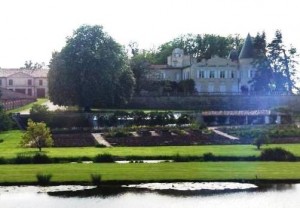Who’s on First, What’s on Second and Third in 2009?
Pauillac might be the region that comes to mind for most people, when they think about Bordeaux. It’s the home of three First Growth Bordeaux wine producers, Chateau Lafite Rothschild, Chateau Latour and Chateau Mouton Rothschild. Those wines are now incredibly expensive. In part, along with a few gems from Pomerol and St. Emilion they are driving the prices and possibly the standards of Bordeaux today.
In 1855, when the wines of the Medoc were originally classified, the Chateau, not the terroir earned the classification. The classification was set in order by price. The most expensive wines were classified as First Growths, followed by Second Growths, Third, Fourth and Fifth Growths. Essentially this has not changed for over 150 years!
Generally speaking, price denotes quality. While the most expensive wine is not always the best wine, the least expensive bottle is not going to take home the gold trophy either. More often than not, while the degree of difference between some wines might not be readily apparent, you get what you pay for.
The 2009 vintage set a new standard for the price quality ration of Bordeaux at the top end. 2005 was to some, if not many people expensive. Perhaps that year was the first vintage of the modern pricing era. I was a big supporter of the vintage. I bought a lot of wine and advised friends and readers to purchase as well. The wines are great! Before the economic crisis, most of the in-demand wines moved up in price from what we paid as a future. Is the same thing going to happen with 2009? Of course we won’t know until the curtain closes, the fat lady sings and the wines are in bottle.
I’m a fervent capitalist. I am not complaining about the price of the First Growths. I do not want anyone telling me how much money I can make or charge for a good or service. If a wine sells for the price it’s offered, it’s worth the money. A chateau is in the business of producing and marketing wine. If the First Growth’s can sell their wine at $12,000 a case, ($18,000 if it’s Lafite), that is what they should charge. That is their job. It’s not their responsibility to offer the wines for less, allowing merchants, speculators or consumers to make money on the spread.
That being said, I am amazed at the demand for these wines at the current price level. They are selling through to the market place and prices keep rising. Of course, this furthers the “Rising tides raises all boats theory”. However, if other chateaux can sell their wine for the highest price ever, that is also their job and responsibility.
High prices are not necessarily a problem. If the wines sell through and prices rise from their original futures offering prices, consumers who purchased the wines early will feel rewarded and continue to purchase Bordeaux wines as futures. The danger of continually rising prices is, at some point, too many wines will be fully priced. Many wines, even chateaux earning high scores will not rise in price. This means, consumers will not be rewarded for purchasing early. If that is the case, and we will know when the wines are in bottle, This will pose a serious threat to the unique Bordeaux business model of purchasing early. It is something to think about.
I’m not the only person thinking these thoughts in Bordeaux. It is a common concern with owners, directors and negociants. I have had a myriad of conversations with numerous people about the fallout of the high prices being charged and paid!
2009 is an outstanding vintage! The wines are rich, ripe, round, opulent and forward. They offer a very sexy style of Bordeaux. More importantly, once past the Firsts and a few other assorted gems, numerous wines are available for more than fair prices. But because the Firsts are the flagship of Bordeaux, and their selling price is $1,000 a bottle or more for 2009, it’s the First topic on many people’s minds.
Feel free to post, regardless of if you agree or not. I’m off to taste more 2009. Today is focused on St. Emilion .




2 Comments
Stewart… Sorry for not remembering to respond earlier. The US is not the right place to monitor Bordeaux wine prices. If you want to know what is really taking place, look at the prices of the large British wholesalers and the Liv-ex exchange.
Lafite and Latour have moved up. The others are fully valued or over priced. We will not know until the wines are in bottle.
09 first growths are not moving after the 2weeks of release or so in the us. neither are the power 2nds. (i am closely monitoring the bigger online wine shops) the big sellers so far are the high scoring * RP97-100, 100-150$. those are selling very fast and prices are going up. e.g. clinet/montrose/pontet/lafleur-petrus/poyferre, and the big sales of those, which released to very heated up hungry customers and were all released before the 1sts and “power 2nds” may have also saturated a lot of the cash flow away from the 1st and 2nds. and also of note: there is suddenly a spillover run on 08 1st growths and power 2nd growths which are generally 1/3 as expensive or less and many with very high scores. e.g. one clear example: there are no lafite 2008 anywhere to be found whatsoever as of this week.